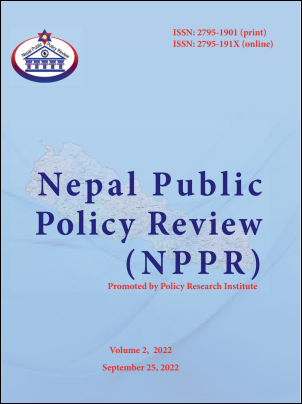Minimizing surface run-off, improving underground water recharging, and on-site rain harvesting in the Kathmandu valley
Keywords:
Groundwater, Kathmandu Valley, urban, impervious surface, rainwater, land subsidenceAbstract
Nepal’s political institutions and administrative units were thoroughly restructured in 2015 with the promulgation of the new Constitution. Several rural areas were combined to meet the definition of urban threshold criteria to classify rural areas into urban categories. Accordingly, over 3,900 local political and administrative units were amalgamated into 753 units, of which, 293 units are classified as urban. Within these newly defined urban areas, many natural environments have been converted into impervious surfaces such as paved roads, sidewalks, and building roofs. These impervious surfaces have drastically increased the amount of surface run-offs—often termed as “urban floods” --under increasing precipitation caused by global climate change. These incidences have negatively impacted to the groundwater recharge processes in the urban areas.
Data on groundwater recharge rates are needed in the context of global climate change to understand the status of groundwater recharge processes in the urban areas of Nepal. However, due to various limitations, this study only focuses around the Kathmandu Valley of Nepal to understand: a) how the expansion of urban, peri-urban, and associated areas have resulted in decreasing groundwater recharges; b) how groundwater is affected by the year-to-year variability of precipitation amount (low and high intensity) with the conversion of the natural landscape into built-up areas; and c) how the changing trends in precipitation and evapotranspiration may impact future groundwater availability. This study is based on a review of the literature and the analysis of secondary data available from the government and various social media and authors' professional experiences. The study ends with some recommendations based on experiences from other parts of the world on groundwater recharge processes.
Downloads
Downloads
Published
How to Cite
Issue
Section
License
Copyright (c) 2022 Keshav Bhattarai, Ambika P. Adhikari

This work is licensed under a Creative Commons Attribution-NonCommercial 4.0 International License.




